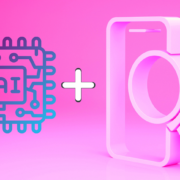Recently, more and more people have been looking for ways to prepare for their financial future. If you have a financial advisor, they probably told you to “diversify your investment portfolio”, which is not only beneficial but wise. As an investor, you want to spread out your investments across an agglomeration of stocks and commodities to minimize potential risks.
Table of Contents
What are the Precious Metals?
An underrated type of investment you should think about adding to your portfolio is investing in precious metals. Precious metals are rare, naturally transpiring metallic chemical elements of exorbitant economic value. The most common types of precious metals include gold, silver, platinum, and palladium. These metals tend to be much less chemically reactive compared to other elements, and are typically ductile with high lustre. Historically, precious metals have withstood the time of economic unpredictability, signifying their value as a hard asset. For centuries, the rarity and utility of these precious metals enabled them to b treasured as monetary device, and a representation of affluence.
How to Start Investing in Precious Metals?
Similar to any investment you make, you should always begin by clearly identifying your investing goals, whether that may be long-term or short-term, and understanding the potential risks. You also must make sure to perform extensive research and familiarizing yourself with the subject, you can visit website to learn more. Below are several ways in which you can invest in precious metals:
Exchange-Traded-Fund (ETF):
Investing in gold, silver or platinum through an ETF is a simple and convenient way of liquidly buying and selling them. As other investors buy these metals, you profit through your ETF, similar to the stock market. With an ETF however, you will not own physical gold or silver, but rather have exposure to the electronically traded asset. It is advised that you work directly with a trustworthy precious metals broker that you feel comfortable with. Some qualities you should look for when choosing a precious metals brokerage include accreditation, a successful buyback history, one that offers full service, deals strictly with reputable vendors and other third parties, and has knowledgeable representatives ready to assist and are fully transparent.
Buying Physical Metals:
This investment method is exactly what it sounds like. You are simply purchasing bars and coins to store in a secure location such as a safe or deposit box. Unless you are certain that you can safely store your metals for a long time, this is not the investment option for you. However, in times of crisis or economic collapse, having physical precious metals might be your best option as they can often be accepted as a form off payment. Physical metals can also be a great way to protect your finances as a tangible asset.
Certificates:
This may not be the most common investment method, but it does provide investors with all the benefits of physical metals ownership, without the inconvenience of transportation and storage. However, in times of crisis, all these are is pieces of paper, essentially worthless.
Precious Metals “Stocks”:
This is an indirect investment method because you don’t buy gold or silver stocks, but rather shares of the companies that mine them. This should only be an option if you are familiar and knowledgeable in the mining process.
Investing in precious metals is an excellent way to diversify your portfolio. However, it is critical that you perform extensive research before diving into it. Clever and disciplined investors can harness the volatility of precious metals for financial gains, but this volatility can also lead to financial disasters. Before investing, make sure you understand that markets are unforeseeable, and previous performance is not an indication of future outcomes.






Comments